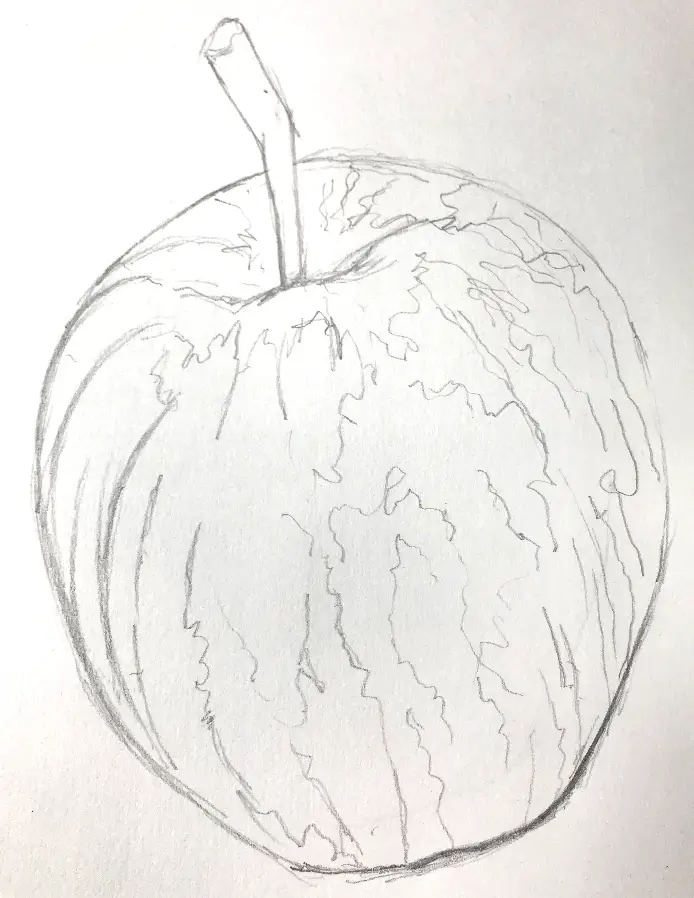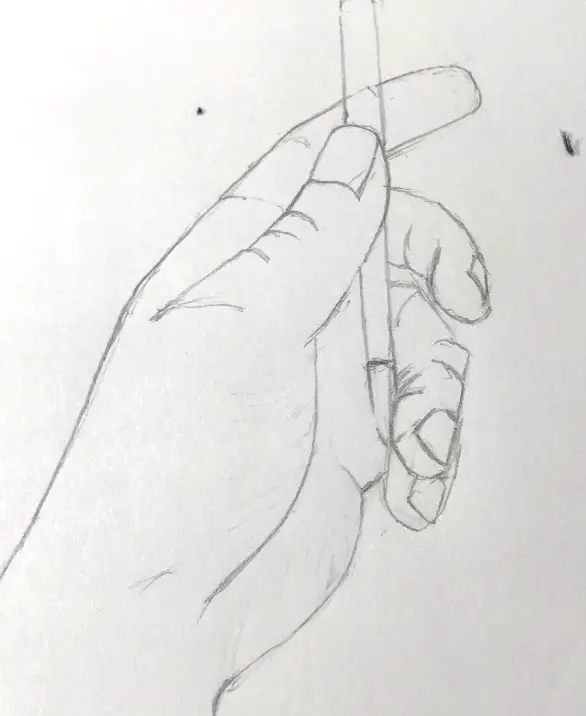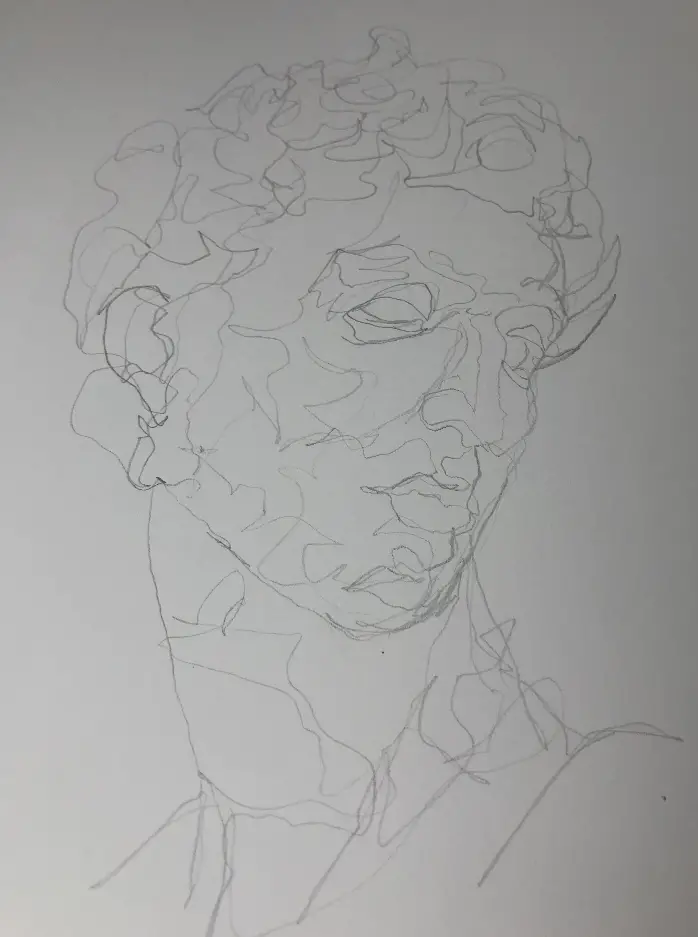A contour is simply a line that defines the edge or form. One of the simplest forms of linear drawing that students can use to study and reproduce their drawing.
As a general rule, to generate contour drawing ideas, begin by drawing uncomplicated objects such as an uncomplicated still-life object such as a flower or a piece of fruit. To progress, draw with varying thickness and strength of the line when creating a contour.
In this post, I will how to create ideas for contour sketches and line drawings.
Nearly all art students start their artistic journey through contour drawing by drawing the visible edges of a shape. A contour line drawing is created by studying the subject's edges, only rarely looking at the paper as they draw.
You Also May Like:
- What is the Difference Between Blind Contour and Contour Line Drawing?
- How to Draw Without Looking at the Paper
- How Do You Draw a Blind Contour Drawing?
- Drawing with Lines and Shapes
- Line Drawing Techniques
So, How is a Contour Line Drawing Beneficial to Artists?
If you are thinking of taking a drawing course, check out some of my favorite providers and the current deals that they have on.
Apart from being a relatively effortless form of art that nearly all of us can pick up, contour line drawings boast numerous benefits. First and foremost, contour line drawing enhances your hand-eye coordination, which is essential for the obvious reasons.
In simple terms, hand-eye coordination refers to the ability of your body's visual system to promptly process information received through the eyes and use it to control the movements of the hands.
As a budding artist, hand-eye coordination allows you to seamlessly track the movements of your hands with your eyes, which is essential in any form of drawing.
What's more, contour line drawings will significantly boost your observation skills because it forces you to solely look at the object in question rather than the drawing paper.
As an artist, if you don't have excellent observational skills, you will find it quite challenging to become a professional artist!
Contour drawing helps you appreciate the fact that figurative drawing is all about observation. With this technique, once you place your pencil on the paper, you won't lift your pen off the paper.
And as you observe and draw the object in question, you do so by not looking at the paper.
It is also important to note that contour sketching is a somewhat simple and straightforward drawing technique that only requires a pen and a piece of paper!
What's more, you can do it nearly anywhere, anytime.
What Are the 5 Types of Contour Drawing?
There are many types of contour drawing, but the most popular and important ones include:
Contour Drawing: Also referred to as outline drawing, as earlier explained, contour images only show the outlines, edges, and shapes of an object, omitting the fine detail, tone, surface texture as well as color schemes.
The primary purpose of a contour is to emphasize the volume and shape of the object or the outlined shape but not inner, minor details.
Students of drawing can recreate the illusion of 3-D form, distance, and space by conveying contour lines by simply varying the weights of the contours. Drawing darker lines in the foreground and fainter lines in the mid-ground and back background areas is an effective way to display form and space.
Blind Contour Drawing: This is arguably the most popular type of contour technique and refers to line drawings that you undertake without looking at your paper as you draw. With this type of line drawing, an artist spends his entire time only looking at the object he is trying to draw without setting his eyes on the paper.
Even if you were to lift your pen to reposition it, you wouldn't look at your paper. When you do blind contour drawing, you focus all your eyes on the object you intend to draw while your hands get to focus on the movements of the pencil. Looking at your subject will ensure that you are drawing what you are seeing.
Apart from improving your observational skills, blind line drawings also make sure you let go of all the preconceived notions you may have about the shape of a particular object. You are resulting in creating a picture that is an accurate representation of the object in question.
Cross-Contour Drawing: This type of drawing involves contour lines representing the dips, curves, turns, and bumps of that particular object you are drawing.
It is imperative to note that in cross-contour drawings, there are no outside lines. You are simply using interior lines to show the tone, shape, and value of an object.
Besides improving your observational skills in art, cross-contour drawing also makes you understand more contour drawing than just an outline. You can manipulate line drawing to incorporate shading, tone, and value into your artwork.
What is Pure Contour Drawing?
The simplest and most straightforward type of drawing involves drawing only the basic outlines of the object you're drawing. You only draw the visible edges of an object, which means you ignore surface details such as shadow, color, and highlight.
For instance, if you were to draw a mango fruit, you would only include a round shape and perhaps the tiny tip that connects it to a stem. You wouldn't include the color variations, highlights, scratches, or even the wormholes—just pure lines.
Contour Drawing Ideas:
Contouring drawing is undoubtedly the easiest way to start your art journey. While it remains a simple and straightforward drawing technique, it has numerous benefits.
It is not only a highly relaxing and stress-free project, but it seamlessly transitions you into observational art drawing.
There are potentially endless types of contour drawing exercises out there but start with simple ones. Just make sure you have the right tools and materials at your disposal.
You will need papers, lots of them. Lightweight and lower quality material can be a great option because you are simply using it for practice purposes. Of course, you'll need a pen or pencil.
I would strongly recommend using fountain pens not only because they feel pretty comfortable in your hands but because they eliminate the temptation to try to erase your mistakes, which is the basis of contour drawing!
When it comes to contour drawing ideas, know that a contour line drawing can be anything, and the options are endless.
Contour drawing lessons develop the observational drawing skills of students and the beginner as a relatively short exercise contour images in minutes. It would help if you began with simple objects.
Such as a single flower. A piece of fruit, human form, portraits, hands, and other still life forms.
Draw the contour you are looking to represent slowly. After choosing your preferred subject:
- Let's say a single flower.
- Could you place it in front of you?
- Make sure that you are confident you'll get a good view of it.
With your pen and drawing paper ready, find a starting spot to begin, and put the tip of your pen down onto your paper.
Focus all your eyes on the object and slowly start following the object's outlines as you draw. Try to keep your eyes on the object as much as possible. Resist the urge to look at your drawing paper.
As you draw the object's outlines, feel free to change from one subject to another, but make sure you are not lifting the pen. Even though you are only drawing the edges of the object, make sure you capture as much information as possible!
It would help if you practiced more to master the art of drawing contours.
And if you do these exercises correctly without omitting any of the procedures explained here, you'll see lots of progress as you look back on your previous work.
And once you become confident with yourself, you can try more challenging assignments, such as blind drawing.
The Bottom line:
Contour drawing has been used in numerous ways throughout art history simply because it is a strong foundation of drawing.
It is a great way to enhance your artistic skills and can be practiced nearly anywhere using simple tools and materials.
Through routine exercise, contour sketching will not only immensely boost your observational understanding.
It will also train your hands always to follow the movement of your eyes. It is allowing you to draw near-perfect pictures and elevate your creative side to another level.
Sources:
https://www.etymonline.com/word/contour



